In addition to great art by Kline, Corben, Pinkoski, and others, MCR had it’s own little controversy inside the pages…read about it!
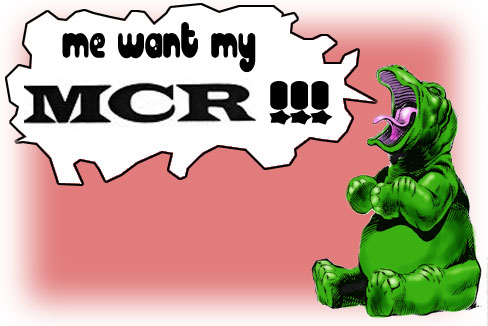
MCR 4: 1971
Editor/Publisher: John J. McLaughlin
MCR, or Modern Collector’s Review, lasted a few issues in the early 70s and was spearheaded by artist John McLaughlin. You can see his work is several zines I have already profiled, including the BayCon booklet seen here. I was very fortunate to get not only editor McLaughlin to take part, but artist and assistant editor Jim Pinkoski as well, a mainstay of the early 70’s fanzine scene. His character Noman appears here and in several other fanzines, along with his moody zip-a-tone filled illustrations. But, I am getting ahead of myself.
I was lucky enough to get this fanzine from Robert Kline (who also features in this issue), not having any of my own. Speaking of Kline, he starts off the zine in a colorful fashion and features a few of his favorite subjects, reptiles and barbarians. Feast your eyes below!
Bob had this to say via email about the above cover:
The original for the cover painting was done in gouache on illustration board, and hangs in my son’s home in Sherman Oaks. A better reproduction appears in one of the gallery catalogues I believe I included with the fanzines I loaned you. This is clearly another piece heavily influenced by Frazetta. To my eye, these years later, it seems to have a strong Ken Kelly quality. A friend of mine from the Art Center years, Dave Russell, gave it it’s title: “His Mother’s Enemy.”
We will see more of Bob’s work later in the column. MCR is similar in feel to Bill Wilson’s The Collector in that it is composed of fan columns, spot illustrations, interviews, and strips. Nicely designed, though there are a few instances where the type appears to be a bit too small, the zine definitely delivers a hefty package of material. I was told by zine aficionado Aaron Caplan that this issue was a marked improvement over the earlier issues, and that each issue improved on the previous.
The ‘pro segment’ of this issue is a short Joe Kubert interview accompanied by some too small reproductions of his Tales of the Green Beret strip and the nice self referential illustration by Joe below.
Fan columnist Dwight Decker provides not only a column on the theological aspects of Marvel comics story lines in his The Spinal Column, but a nice one two punch in part two, which consists of two columns actually, written 18 months apart. The first asks his readers if they are in a similar predicament as the writer, that of the intelligent social outcast or loner (a reprinted column written when Decker was 16), and, of course, comic fan. The second half is written after Decker had been in college awhile, matured, and generally mellowed in his estimation of his station in life and his perception of his fellow man.
There are several visual features this issue, in the form of spots and spotlights. Below you will see a full page on science fiction digest artist John Schoenherr (supplied by artist and assistant editor Pinkoski), who went on to do a wide variety of work in a plethora of media, winning several awards along the way. You can see a great article with many illustrations here.
Several other artist make their mark on this issue, including Richard Corben, seen below.
Another feature within this issue is a Robert Kline portfolio (I believe I have seen two of the 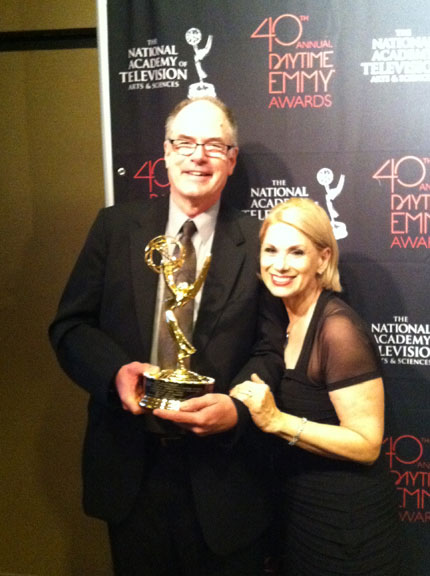 illustrations in other zines), which, from what is said in the editorial, was thrown together quickly at the last minute to replace a previously planned batch of Juanillo work. Check out more Kline ink magic below. Oh, I almost forgot to mention…Mr. Kline told me via email that he just received his first Emmy! Specifically it was for “Outstanding Individual Achievement in Animation” as “Storyboard Artist on Disney’s Minnie’s Bowtoons ‘Piano Movers and Shakers’ Disney Channel.” That’s Bob and his wife Kris you see to the right. A fitting way to top off the animation career he just retired from! Ever the self critical artist, Bob talks below about his portfolio:
illustrations in other zines), which, from what is said in the editorial, was thrown together quickly at the last minute to replace a previously planned batch of Juanillo work. Check out more Kline ink magic below. Oh, I almost forgot to mention…Mr. Kline told me via email that he just received his first Emmy! Specifically it was for “Outstanding Individual Achievement in Animation” as “Storyboard Artist on Disney’s Minnie’s Bowtoons ‘Piano Movers and Shakers’ Disney Channel.” That’s Bob and his wife Kris you see to the right. A fitting way to top off the animation career he just retired from! Ever the self critical artist, Bob talks below about his portfolio:
The portfolio isn’t much of one. There were a lot of attempts at portraits and self-portraits being done at the time in fandom. I believe I was specifically asked to provide this one. It is at best semi-accurate. The shepherd with the little hippo-like creatures got me a real dressing down from Mike Kaluta. He and Steve Hickman and I saw each other from time to time in those days. They were hippies and I was in the Air Force which provided an interesting dynamic in 1970. Mike had recently done a black and white piece of a woman shepherd in a robe with a flock of huge snails. I’m sure I was subconsciously borrowing the idea, and he made me feel so bad about it when he saw my drawing that I’ve tried to be much more careful about avoiding the tendency since. The drawing of the alien seeking directions was later used in a black and white Marvel science fiction magazine for an ad. Roy Thomas contacted me for the rights to use it. I got a check and everything.
The other artist that has the most work featured in this issue is the assistant editor, Jim Pinkoski. I had seen a fair amount of Jim’s work in other fanzines before (published a bit later than this zine), and was always impressed by the attention given to values and surface techniques. His work in this issue shows him still somewhat in the formative stages, deciding which media to use, fine tuning anatomy, storytelling and scripting. You can see his website here, by the way. The first image below is the back cover (of which Pinkoski laments, “that was one of my, uh, horrible fan attempts at doing a full color painting, and it’s just embarrassing…”), then you will see a few pages from his signature Noman character, as well as a centerfold that is close to the higher level of work he would soon achieve regularly. Also included in this issue are several installments of a series called Aliens, which looks as if Pinkoski was trying to get it syndicated, as it’s told in short 3 or 4 panel horizontal bursts. Download the pdf to see 15 plus installments of this. I wanted to also mention that the lettering/typography is far better than most of his fellow fan’s work as well.
Below is a short interview conducted with Pinkoski via email, followed by a nice center spread displaying Jim’s command of mood…and zip-a-tone!
Q: At the time of MCR 4, it was early 1971. By this time, how long had you been publishing in fandom?
A: John McLaughlin started MCR by himself. We crossed paths about the time when he did issue #2 and he adapted one of my “Aliens” sketches I had mailed to him in a letter and he used it as his cover (without letting me know ahead of time-I told him that if he had told me before that he was going to put me on the cover, I would’ve sent him a better drawing!) When it came time to do issue #3 I travelled up to his parent’s house in Sunnyvale, CA and we did our best to put together a better-quality fanzine. Then when we did #4 we decided to pull out all the stops and go with high-quality printing with a full-color Bob Kline cover. John financed the whole project, I just helped with content and layout.
Q: Do you remember the first zine you were published in?
A: I believe that John’s MCR #2 was the first fanzine. I fell in love with drawing comics at the age of 11 and learned to draw by tracing and copying my favorite artists like Murphy Anderson at DC and Mac Raboy’s Sunday Flash Gordon. My 1st published fan drawing was in CREEPY #12 in 1966 (Berni Wrightson beat me by one issue). If there were any other fanzines before MCR #2, I’ve forgotten.
Q: Who were a few of your favorite fellow fan artists of that time?
A: I was extremely impressed with the professionalism of Bob Kline who provided the cover and portfolio art, and it was really nice to read your recent interview/update with Bob in Ink Stains! Growing up I was totally fixated on professional artists like Murphy Anderson, Mac Raboy, Frazetta, Hal Foster, Al Williamson, Neal Adams, Jim Holdaway (Modesty Blaise), Sydney Jordan (Jeff Hawke), Barry Smith, Jeff Jones, John Berkey, Virgil Finlay, etc., so I don’t think I was paying much attention to fan artists.
Q: I see one illustration by your younger brother Ken in this issue…did he do much art then and did he go on to do more?
A: My brother Ken is 5 years younger than me, and he graduated with a degree in architecture. He married the boss’s daughter at one firm and designed a lot of neat houses and some stores within the San Francisco Airport. He’s currently up in the Seattle, WA area near Microsoft’s HQ, still drawing, but it’s always just been a hobby.
Q: Have you heard from McLaughlin since?
A: Back in 1975 when C&C set up their San Jose Comic Art Shop, John McLaughlin was the magager of the Star Trek store we put in the back of the comic shop (Brent Anderson worked there too). Then when I left San Jose in 1976 to go to New York to work in Neal Adams’ studio, John and I lost contact with each other. Several years ago I managed to track him down and he was living in San Francisco, but we just touched base briefly and then we moved on again and I haven’t heard anything since.
Q: It looks as if you intended Aliens to be a syndicated strip. Was that just the way it looked, or did you try to actually get it syndicated or published regularly somewhere?
A: My Aliens strip was my “developmental” daily comic strip. My main artistic dream in my teens was to some day have my own daily syndicated comic strip, and “The Aliens” was the one I worked on over the years (but never submitted it to a syndicate, I knew it wasn’t good enough). When young I drew hundreds of these small Aliens strips with a blue ink pen, the same size as strips in the newspapers. I switched to learning how to use a crow quill/hawk quill pen with India Ink on slightly bigger white paper. I finally moved up to trying to do the strip as best I could using some Murphy Anderson-inspired landscapes and Joe Kubert head shots converted to aliens (gasp, “swipes”!), but I had problems being able to draw mouths, so I based my aliens with their big heads on the 1960’s OUTER LIMITS episode “The Sixth Finger” and made them telepathic with no mouths (problem solved, no mouths to draw)! In 1968-1970 I attended Sacramento State College and the campus printed them in the campus magazine and the campus newspaper wanted to serialize those strips. I dropped out after 3 semesters and I made the mistake of leaving the originals with the newspaper so they print it when I was gone, and the jerks never sent the originals back to me. All of my Aliens daily originals were totally lost and gone.
Q: On page 5 of the Noman story, is it coincidence or is that bearded guy at bottom based on Neal Adams?
A: That is definitely Neal Adams — I loved his work, especially his Ben Casey strips — so I thought I’d put him in there! In 1976 I worked at Continuity Studios for one month, at a desk right next to Neal, I did rough drawings from his thumbnail sketches that he would then ink for his commercial motion boards, and I’d help coloring them. Whew, talk about being a bit intimidated, sitting there right next to Neal Adams! During this time Neal was beginning work on his Superman/Muhammad Ali book, and I saw the cover and the first 10 pages penciled. Unfortunately, I ran out of money and had to leave New York and return to California after only being at the studio for a month. One of the neat things I had brought out to New York with me was this giant folder I’d assembled over the years of nearly everything I could find of Neal’s work, and he and the other guys really enjoyed thumbing through that humongous folder! One late night while Neal was looking at it, Sergio Arigones came up behind Neal and cut off a lock of his hair and taped it into my folder and did a sketch of doing it! He wrote, “Jim, now your collection is complete!” HA! A few years ago I reminded Neal about it, but he said he didn’t remember it… but it happened!
Q: What was your take on the whole “Adkins tracing machine” article and the response?
A: Like most people in comic fandom back then in the 1960’s, we knew little about how professional artist’s kept “swipe files” of other artist’s work so they could reference it to meet tight deadlines. As you recall, James Warren at CREEPY & EERIE had a reputation of keeping all the original art of the artist’s who worked for him, while at the same time at DC they were actually giving away for free whole chapters of Adam Strange art by Infantino & Anderson to people who wrote the best letters they published. When I saw some of Dan Adkins’ art that was obvious copying of other artist’s work, I wrote a letter to Warren and asked, “Is the reason you won’t part with the original art because you don’t know what is original and what isn’t original?” So here I was a young kid of 15 or 16 and one evening the phone rings at my parent’s house in California, and it’s a partially drunk Dan Adkins calling from back East wanting to talk with me about that letter! It was a good conversation, I told him that I really liked his art, and I was young and didn’t know why he was copying such well-known art. Dan explained to me about how nearly all artists swipe from other artists to one degree or another, it’s just that he kept getting “caught” at it. And so Jim Vadeboncouer did his “Tracing Machine” article in MCR #3, and John did the follow-up article in MCR #4 with Dan Adkin’s reply letters to cover this “hot topic.”
Q: I remember the great moody work I would see of yours in various fanzines (including this one), relying heavily on zip-a-tone. Did it feel like a gift from the art gods when you first got your hands on some?
A: I loved using Zip-a-tone! I found out about it when WEE PALS cartoonist Morrie Turner visited our high school in San Carlos, CA. First, I only wanted to work in black and white, and using Zip-a-tone added a wonderful realistic shading to the art. I played around with doing a few scratchboard illustrations, a little painting. I hated painting, mainly the fact that you have to constantly change the paint color every time you work on a different part of the painting… while using just black India Ink you can work on any part of the drawing you want to quickly and easily! And who could afford to buy multiple expensive paint brushes back then? My finances were stressed out enough just keeping up with getting my favorite comics and magazines. I tried some pencil-tonal art and ink-wash art, but reproducing it was expensive so I backed away from it. Remember, back then you didn’t have good quality Xerox machines that can easily scan tonal drawings. In fact, the earliest Xerox machine I remember using back there in the early ’60s at our local library actually made negative prints! So I stuck with black and white ink art, it was the easiest to reproduce, and it fit in perfectly with my dreams of one day getting my own syndicated comic strip.
Q: Do you have any closing thoughts?
A: If a person wants to be an artist, you have to totally apply yourself to it. It’s the only way that your talent will develop, and if you stay at it long enough you might even end up with a certain recognizable “style”! From 1971 until the early ’80s I worked off-and-on in Bud Plant’s COMICS & COMIX stores in Berkeley & S.F. & San Jose. We stocked everything that was being published, and my counsel to everyone who wants to be an artist was that you have to do work that can sit on the racks next to all the other great comics being published and yours has to look as good or better than the comic next to it! If your talent isn’t there yet, just publish on the “fan” level to get the experience of seeing how your work looks in print.
One of the things included in MCR #4 were my comments on Life in regard to my own personal search in this world for Truth. Sure, do art and do work and earn money and have fun, test your limits and gain your experiences, but if you’re not also including a day-to-day search for GOD in some form or fashion, then you’re missing the boat. I was always against war and killing, and my published comments in MCR #4 were a part of what I turned into the Draft Board after I dropped out of Sac State in 1970 who immediately classified me 1-A. I did not want to go to Viet Nam (or any other war on this planet), and I was granted a deferment and got Contiencious Objector status and spent the next few years working off my “required service” in a Goodwill Store and in the Ecology Corps Park Service in Klamath Falls as a forest fire fighter, etc.
In a way I’m glad I never succeeded at getting a job drawing Spider-man or Conan for 20-30 years. I always gravitated toward doing “special” projects. While I’ve always enjoyed Star Wars and Star Trek (I saw all the episodes as they aired), I’ve only done 1 Star Wars drawing and only 1 Star Trek/Mr. Spock drawing in my whole life! Instead of drawing hundreds of SW and ST pages of art, I was attracted to more unique projects. After working in 1981 for a major California bank, I did my daily format “Bright Ideas” comic strip containing what I still maintain is the one and only 100% solution for the banking system. My search for truth about GOD lead me to change from being a New Ager to being a Christian and a Seventh-day Adventist, and I’ve done a series of Bible studies for the Seventh-day Adventist Church that have sold nearly a half million copies in the past 25 years. In 1989 I met the man who very probably has discovered the remains of Noah’s Ark and other very important biblical archaeological discoveries, the late and controversial Ron Wyatt. I helped him publish his material, and I managed his 1st museum in 1994-1996 — because doing so was more important to me than illustrating Conan or Star Trek or Star Wars — I’m not the best artist, but I’ve worked on some very special projects! The fictional Indiana Jones went searching for the Ark of the Covenant in the movies, and back in 1993 I drew what very well may turn out to be the REAL Ark of the Covenant that may be shown to the people in the real world at a time in the not-too-distant future!
 Also included in this issue is a Tom Christopher portfolio and a letters column. The latter is a good tie in to what I will discuss
Also included in this issue is a Tom Christopher portfolio and a letters column. The latter is a good tie in to what I will discuss  next. In the previous issue of MCR, new writer James Vadeboncoeur Jr contributed an article taking artist Dan Adkins to task for what the writer claimed was the most rampant career of “swiping” around. In this issues letters column, many of Adkins’s contemporaries defend their fellow artist, including Berni Wrightson, Jeff Jones, and Mike Kaluta. Adkins himself has both a letter to the editor reply to the article (“Dan Adkins Speaks”), as well as an actual reply article he wrote himself. Vadeboncoeur also has a reply to Adkins’s reply called “Dear Mr. Adkins,” where he attempts to clarify a few points, soothe a few ruffled feathers, yet still sticks to his guns about swiping being unethical. Adkins’s letter and article claims that many more artists use this practice than is known (or reported), and also asserts that Vadeboncoeur is somewhat ignorant of the industry, the practices used by artists, and what is often needed to be done to make a deadline. The illustration below that accompanies Jim’s Dear Mr. Adkins puts it in simpler tones. You can see examples of various panels that complemented Adkins’s replies on either side here. I have always loved Adkins’s clean inking style. Some of you may know that Adkins learned and honed much of his craft as Wally Wood’s assistant. Other notable artists that held that position include Larry Hama, Wayne Howard, Mike Zeck, Craig Russell, Paul Gulacy, and Ralph Reese. Sadly Dan died on May 9th of this year. For a well written obituary, go here.
next. In the previous issue of MCR, new writer James Vadeboncoeur Jr contributed an article taking artist Dan Adkins to task for what the writer claimed was the most rampant career of “swiping” around. In this issues letters column, many of Adkins’s contemporaries defend their fellow artist, including Berni Wrightson, Jeff Jones, and Mike Kaluta. Adkins himself has both a letter to the editor reply to the article (“Dan Adkins Speaks”), as well as an actual reply article he wrote himself. Vadeboncoeur also has a reply to Adkins’s reply called “Dear Mr. Adkins,” where he attempts to clarify a few points, soothe a few ruffled feathers, yet still sticks to his guns about swiping being unethical. Adkins’s letter and article claims that many more artists use this practice than is known (or reported), and also asserts that Vadeboncoeur is somewhat ignorant of the industry, the practices used by artists, and what is often needed to be done to make a deadline. The illustration below that accompanies Jim’s Dear Mr. Adkins puts it in simpler tones. You can see examples of various panels that complemented Adkins’s replies on either side here. I have always loved Adkins’s clean inking style. Some of you may know that Adkins learned and honed much of his craft as Wally Wood’s assistant. Other notable artists that held that position include Larry Hama, Wayne Howard, Mike Zeck, Craig Russell, Paul Gulacy, and Ralph Reese. Sadly Dan died on May 9th of this year. For a well written obituary, go here.
What makes this event interesting are several things. First, the idea of a fan taking a stand that he must know is going to get some blow back. Second, the continuity from issue 3 to 4, showing the back and forth between Vadeboncoeur and Adkins. Third, the reactions from Adkins’s fellow pros (which is not, to a man, preferential to Adkins’s views). Lastly, the reaction and explanation from editor McLaughlin is interesting reading as well. It all makes for great theater.
At the last minute, I was able to locate the prime mover behind MCR, John McLaughlin. Below is a short interview conducted via email.
Q: John, the one image of yours I really remember is the Star Trek illo in that Baycon book…probably because my first published work was in there as well, so I know a lot of the images in there by heart!
A: I do so remember that particular program book. Jim Pinkoski, Brent Anderson and I stayed up pretty much around the clock one weekend to put it together. I was so tired when we drove up to Berkeley early Monday morning to deliver it to Tom Orzechowski, I had to have Brent drive my car part of the way, and he’d never driven a stick before!
Q: Do you remember the first fanzine you ever had?
A: It was a copy of the old RBCC (short for the Rocket’s Blast and Comic Collector, two zines published by Gordon B. Love, that he merged into a single pub). I think it was an issue from late 1966. I still have it, but it’s in storage and I can’t readily get to it. You may recall that Gordon Love used to advertise his zines in Marvel comics. I’m pretty sure that’s how I found him, and comic fandom.
Q: I am assuming MCR was your first (and only?) zine. How old were you when you started it and what compelled you to start your own zine?
A: MCR (Modern Collectors’ Review) was my first, but not only, fanzine. I published #1 in September 1968, and I was fourteen. I’d been turned on to a great mimeo zine called Concussion, published by Mike Robertson, by one of my closest fan friends at the time, the artist Jim Pinkoski. That started me buying other zines, and generated the desire, quite common in comic fans of the day, to pub my own. Guess it’s the same sort of muse that makes people write blogs these days. There’s nothing more fun for a fan than to be able to share one’s sense of wonder with other fans. Back then it was personal correspondence, zines, and the occasional con (there weren’t too many at the time). Nowadays it’s mostly cons and the web.
My current zine is called Living in Atlantis, the title of which was inspired from a passage in Armistead Maupin’s Tales of the City. I have been working on issue #4 for a few years now…and I’ve promised myself to get it published and mailed before the end of 2013.
Q: Do you have any favorite zines (as a reader) from that time period? Any favorite fellow artists? Would you have considered yourself fully immersed in fandom or more of a dabbler?
A: I followed the RBCC for a few years, because at the time it was the major ad zine for comics fans. My faves included the aforementioned Concussion, Gary Groth’s Fantastic Fanzine, Bill Wilson’s The Collector, Martin L. Greim’s The Comic Crusader, Gordon Matthews’ Heroic, Alan Hanley’s Comic Book.
Q: What did you do immediately following MCR 4, which I assume was the final issue?
A: Yes, MCR #4 was the last zine until I started publishing Living in Atlantis in November of 2006. I got involved in the original Star Trek fandom in the early 1970s, which is when I started doing all those pen/brush & ink illos based on film clips. I went to a lot of Trek cons during the 70s. So, having been an “actifan” in two fandoms I would have to admit to full immersion; definitely not a dabbler.
Q: Any anecdotes about issue 4?
A: To answer your question, the following is an excerpt from an article I wrote for Living in Atlantis #1:
MCR #4 was the zine I’d been working towards when I cranked out my first mimeo page way back in the summer of ’68. I knew I was capable of reaching that level of quality; I just didn’t know it would take me four years to get there. I was 15 when I started working on it, and 17 when I brought the boxes of completed issues home from the printer. The zine was a success. It was visually dynamic and a great read, and the feedback I received confirmed that my readers loved it. I was completely burnt out by the process of getting from issue three to issue four, however. I’d typed all of the text, carefully hyphenating words and artfully adding extra spaces here and there to produce justified copy from a fixed-width IBM Selectric typewriter. I stripped, mounted and touched-up nearly every single negative. With the printer’s assistance, I burned a good portion of the printing plates, ran the folder, collated the signatures, and operated the saddle-stitcher. A huge chunk of my life went into that zine, and though I was very happy with the result, I’d had enough.
Q: How did you hook up with your regular contributors/editors?
A: Well, I got lucky with Jim Pinkoski. We had been corresponding and trading comics for years. Assistant editor Randy Adams was a local fan friend that I met in Jr High. I bought a number of zines, and in most of them the contributors’ addresses were listed in the letter columns. That’s the way it was done back then: we all wrote a lot of letters. Hell, I got Jim Pinkoski’s address out of the letter column in an issue of Magnus, Robot Fighter, saw that he was an artist, and wrote him a letter. He lived in San Carlos, which was only about 20 miles from where I was living in Sunnyvale, and figured that we might have a chance to meet.
Q: Did working on MCR help your career in any way?
A: It helped me hone my writing and graphic design skills more than my drawing skills. Actually, by the time I’d completed MCR #4, I thought that I might never develop the drawing skills to make it as an artist, so I went whole hog into graphic design, where, surprisingly, I DID end up having enough talent to get work.
Q: What have you done since then?
A: With a fan friend I met in high school, Randy Cooper, I ran a small Star Trek memorabilia business during the 70s. It didn’t make us a living, but helped us go to a lot of Trek cons; and at the time it was a lot of fun. In1982, Randy and I got together and founded BayCon (the San Francisco Bay Area Regional Science Fiction & Fantasy Convention). This was after the Bay Con comics convention founded by John Watson and Tom Orzechowski stopped being held.
Professionally, in the mid-late 70s I was an art director, graphic designer and production artist for the educational department of a Silicon Valley computer company. I did the publications they used to train people on the machines. Then I was one of the lead artists working for a production house. One of many companies used me as an outside vendor to do the paste-up & other production art for graphic design firms and ad agencies. For the past two decades I’ve been a casualty claims consultant, specializing in environmental and toxic tort claims, for a large insurance broker.
At any rate, in this column you only see a fraction of the material in MCR 4, so please download the fanzine here.
Aside from thanking Bob Kline for loaning me the fanzine in the first place, thanks to him for answering some questions via email. Also, thanks to Jim Pinkoski for weathering a battery of questions on a subject from 40 years ago! If anyone asked me about anything from that long ago, they would be up excrement river without a surfboard!
Thanks for tuning in, fellow weirdos! Leave comments, you lazy bums!
Ken Meyer Jr.
kenmeyerjr@yahoo.com



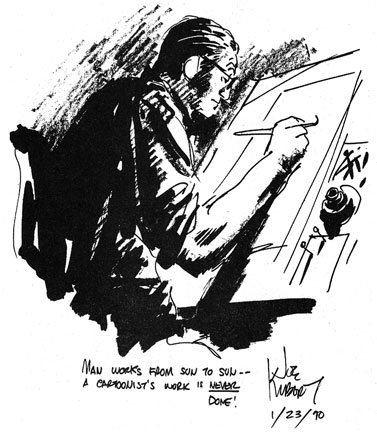
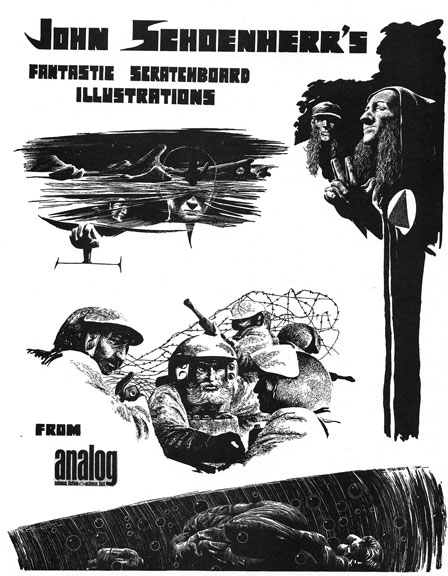

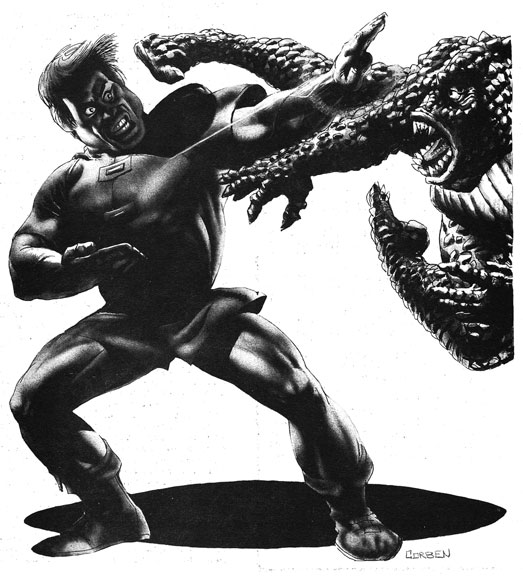


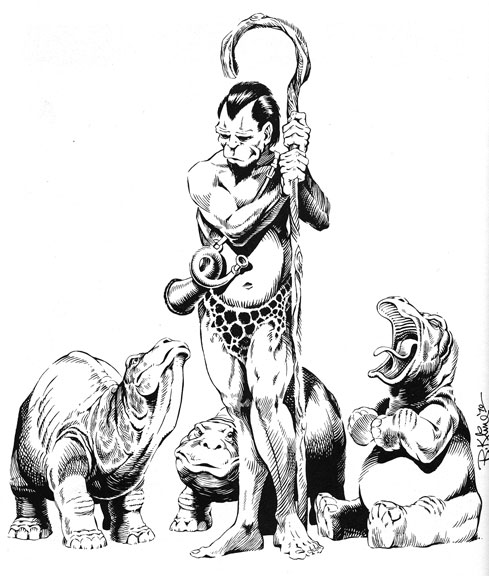
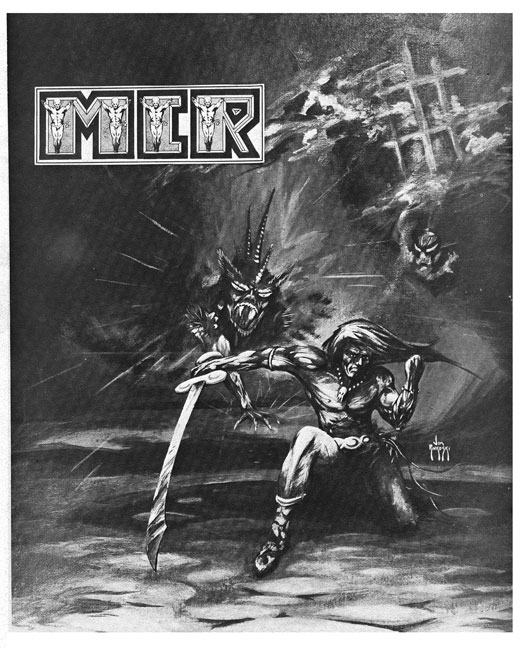
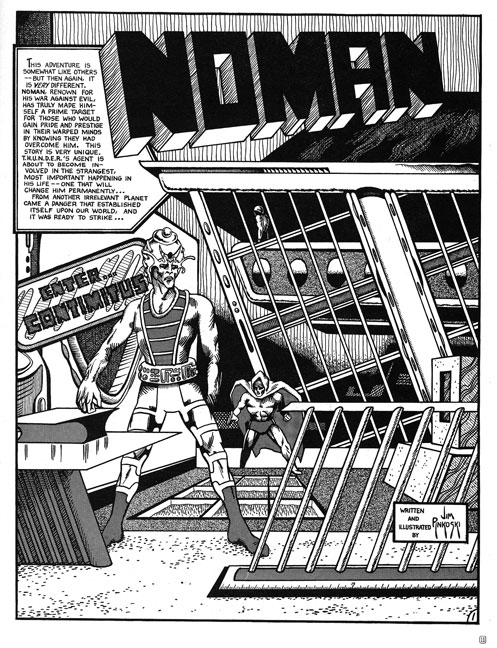
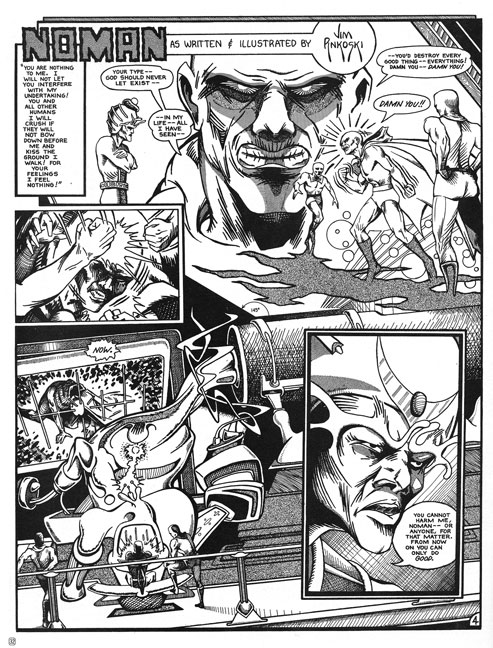
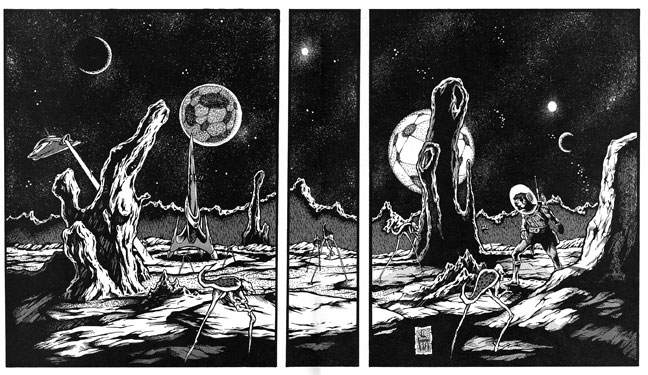
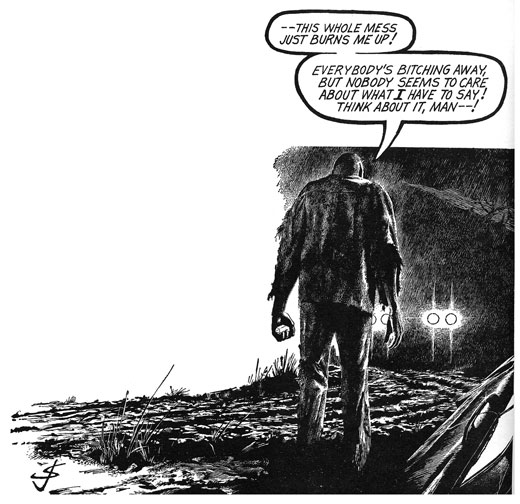
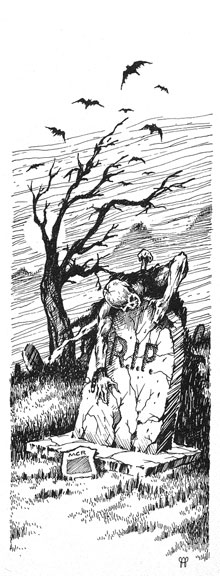
Another good issue, Ken! Keep ’em coming!
I wanted to leave a note here for any readers that get this far. The column above, though having all the info I wanted, does not LOOK exactly as I would like. The McLaughlin interview is supposed to look like the Pinkoski interview, have the fanzine titles in caps and italics, not have all that space between text blocks, etc. But, WordPress, for me, is the slowest program on the earth, the McLaughlin interview came in at the last minute and doing the things to make the appearance correct would have taken a few hours. So, hopefully any design majors out there will forgive me!
Ken, I feel your pain. Good article as usual though!
Billy, you having troubles too? I get the feeling it’s only me. Thanks!
Ken, don’t feel bad about the extra spaces between the blocks of texts. Web authoring tool are notoriously glitch-prone. The article is great! Thanks so much for making Jim Pinkoski’s and my late sixties fanac magnum opus available to a wider range of fans. And it was really nice to see the reference to Bob Kline. Keep doing what you’re doing.
During the Phantasmagoria years, Ken Smith published (or planned to publish) several portfolios; they were advertised in that digest-sized catalog of his. I’d love to see some of that if you have access to it. Thanks for all you’ve done so far.
Thanks for the highlight of MCR #4. I have issue #2, which features Jim Pinkoski’s alien head cover, but #4 is a much better issue.
Thanks also for the interviews — especially Pinkoski’s. I liked his work back in the 1970s, and it’s nice that his recent interview filled in the gaps. He did a couple of “The Buyer’s Guide for Comic Fandom” covers back in the day, but I also remember some of his other ‘zine work as well.
Thanks, Russ! I loved Smith’s zine, but I hear he is a litigious person, so I don’t want to risk it.
as always thanks for the info on ols USA zines. It is always a pleasure ot know about that
Wow! Fantastic as usual Ken!
Is there a way to contact John McLaughlin? I have something he would find interesting.
You can throw me an email at: inatlantis@aol.com
Pingback: Ink Stains 165: POW! – ComicAttack.net